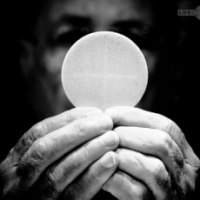Between reflecting on this on my own after my post last night, and having a chat with Kristen today, my more-seasoned-Catholic-convert and world-traveler friend, I’ve had a few more thoughts on calling priests “Father.” We were both surprised by the claim that priests in the English-speaking world did not use the title “Father” until the …
Continue reading “More thoughts on calling priests “Father””
